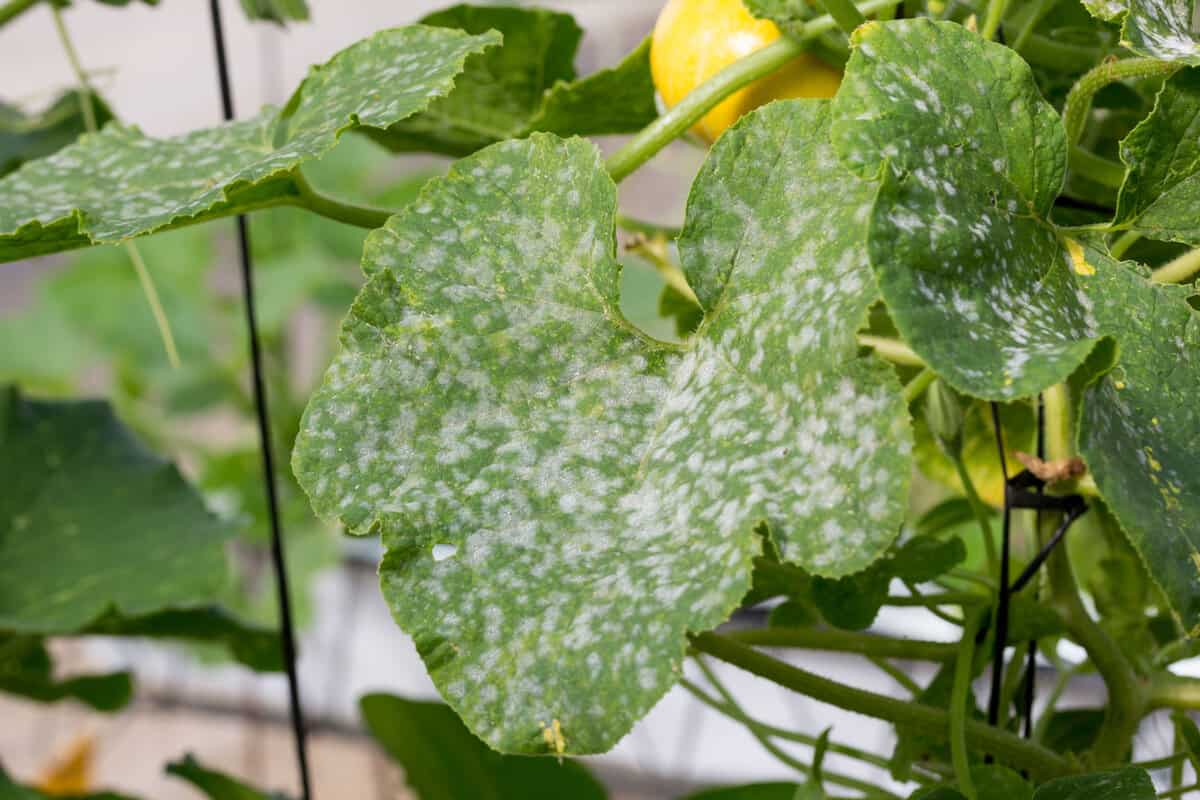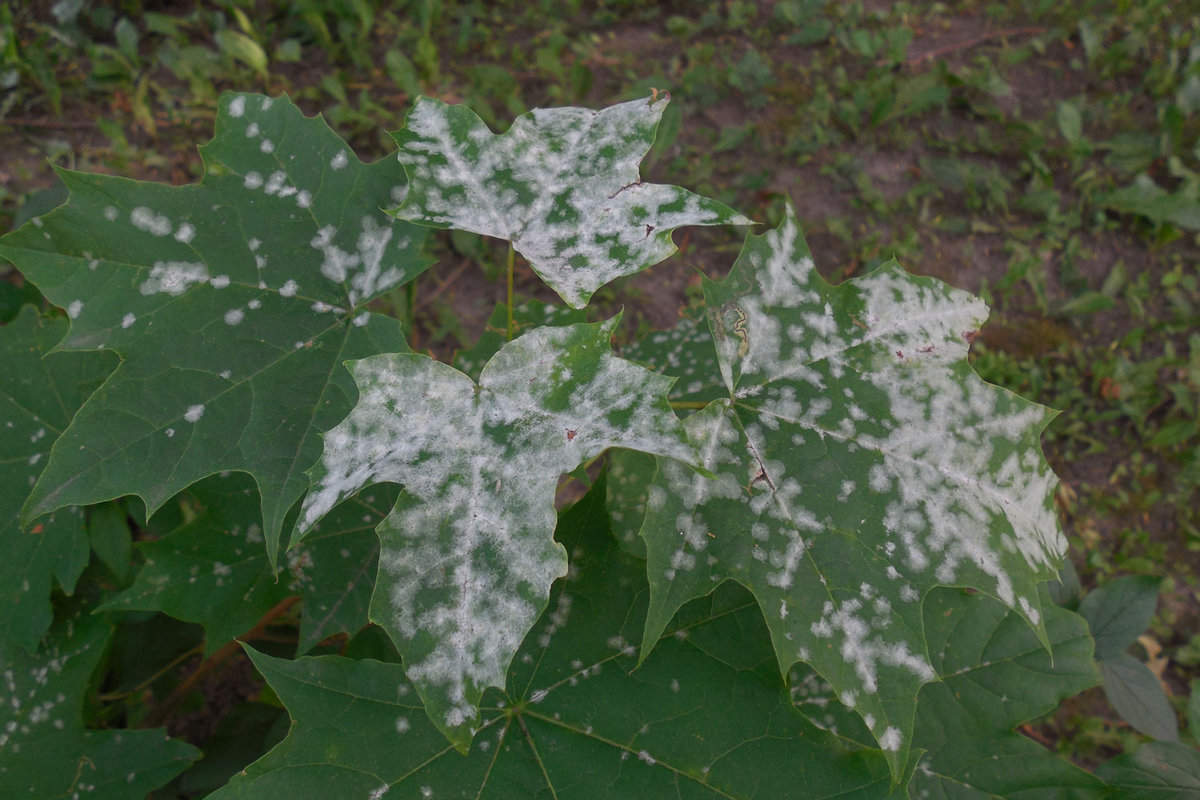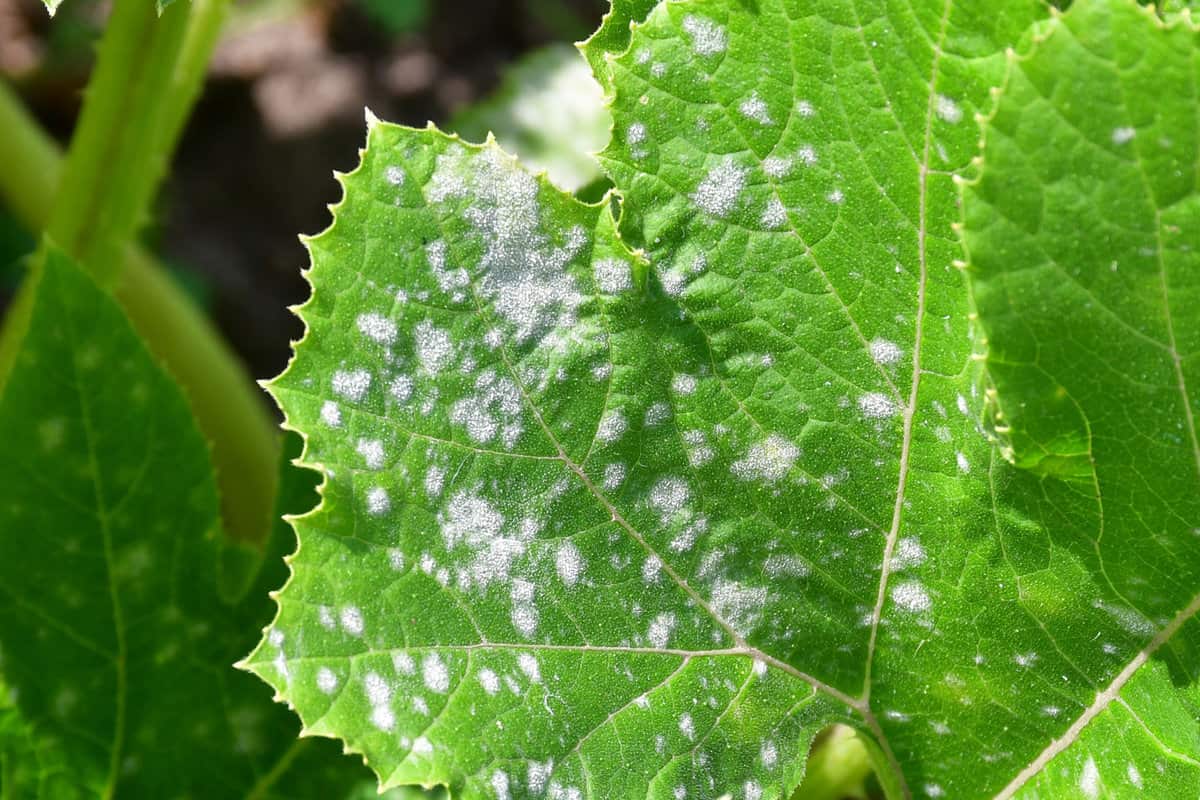As the fall season approaches, you might be looking forward to harvesting your beautiful squash.
However, powdery mildew can quickly turn your gardening dreams into a nightmare.

This pesky fungal disease appears as a white, powdery coating on the surfaces of leaves, potentially ruining your crop and diminishing the overall health of your plants.
It thrives in warm weather, high humidity, and shady conditions, often impacting vegetables like pea, bean, okra, cucumber, squash, and pumpkin.
Don't despair—you can outsmart this sneaky fungus and protect your precious squash. Here are eight genius ways to stop powdery mildew in its tracks.
Understanding Powdery Mildew
Powdery mildew is a common fungal disease that affects a variety of plants, including squash.

It appears as a white, powdery substance on the surface of leaves and can lead to reduced growth and fruit production.
This section will help you better understand how powdery mildew spreads and the symptoms it causes specifically on squash plants.
How it Spreads
Powdery mildew is caused by several different fungi that reproduce through spores.
These spores can be dispersed by wind, rain, or insects, allowing them to easily reach and infect healthy plants.

Certain conditions, such as high humidity, cool temperatures, and crowded plantings, can foster the growth and spread of powdery mildew.
To minimize the risk of an outbreak, try to avoid creating these conditions in your garden.
Symptoms on Squash
On squash plants, powdery mildew often begins as small, white circular spots on the leaves.
As the infection progresses, these spots may grow and cover the entire surface of the leaf.
In severe cases, powdery mildew can cause leaves to turn yellow, wither, and even fall off the plant.
Unfortunately, infected plants may also experience decreased growth, reduced fruit production, and poor fruit quality.
How to Keep Powdery Mildew Off Squash Leaves
The battle against powdery mildew may seem daunting, but with these genius tips, you'll be well on your way to a healthy, bountiful squash harvest this fall.
1. Choose Resistant Varieties
Start planting with prevention in mind. When planning your garden, select squash varieties such as the C. Moschata that are resistant to powdery mildew.
Many hybrid varieties have been bred specifically to resist this pesky fungus. Check seed packets or plant descriptions before purchasing.
2. Spacing the Plants
Proper plant spacing is one of the most effective ways to avoid powdery mildew on your fall squash.
Proper spacing between plants ensures adequate air circulation, which makes it harder for the mildew to thrive.
Overcrowded plants create a humid environment, which is a perfect breeding ground for the fungus.
Giving your plants adequate room to grow helps increase air circulation and reduces humidity, which are crucial factors in preventing the spread of this fungal disease.
Make sure to follow the recommended spacing guidelines for your specific squash variety.
3. Water at the Right Time
Improper watering is another common reason for the development of powdery mildew.
It's essential to water your plants early in the morning, targeting the root zone instead of the foliage.
This practice not only helps keep the leaves dry but also significantly reduces the chances of powdery mildew taking hold.
Additionally, avoid over-watering, which can create a damp environment favorable to fungal growth.
4. Milk Spray Method
Milk is mother nature's mildew fighter! Using a milk spray is a natural way to combat powdery mildew.
A mixture of milk and water can act as a fungicide. Mix one part milk and two parts water and spray this solution onto the leaves of your squash every week.
The proteins in milk can help restrict the growth of powdery mildew and limit its spread.
Watch this video below to see how it's done:
5. Neem Oil as Natural Fungicide
Neem oil is an organic fungicide and pesticide. When applied to squash leaves, it can prevent and treat powdery mildew.
Mix according to product directions and spray on affected plants. Make sure to hit the undersides of leaves, where the fungus often begins.
6. Baking Soda Solution
Baking soda is another excellent organic option to prevent powdery mildew.
Prepare a solution of 1 tablespoon of baking soda, 1 tablespoon of vegetable oil, and 1 teaspoon of liquid soap mixed in 1 gallon of water.
Spray your squash plants with this mixture every week to create an environment less conducive to powdery mildew.
7. Vinegar Mixture
A vinegar mixture can also be an effective solution to tackle powdery mildew.
Combine 1 tablespoon of white vinegar with 1 gallon of water. Spray this solution on your plants every week, being careful to avoid direct sunlight, as vinegar can potentially burn the plant leaves.
This method alters the pH on the surface of the leaves, making it more challenging for the fungus to grow.
8. Biological Control
Some beneficial microorganisms can help combat powdery mildew.
Introducing these microorganisms to your garden may help protect your plants.
Look for products containing beneficial fungi like Trichoderma or bacteria such as Bacillus subtilis, which can be applied to the soil or foliage to manage this disease.
Keep Things Clean
Regularly inspect your squash plants and remove any leaves showing signs of powdery mildew.

After the growing season, clear away plant debris and dispose of it properly (avoid composting infected materials).
This reduces the chance of the fungus overwintering and returning next year.
Keeping Powdery Mildew at Bay
We hope these eight ways to stop powdery mildew have provided you with useful information for preserving your fall squash. Remember, prevention is always better than cure.
By choosing resistant varieties, keeping your plants well-spaced, and avoiding excessive nitrogen in your garden, you're already setting yourself up for success against this annoying fungus.
If you do spot the telltale signs of powdery mildew, don't panic – there's still hope.
By removing infected leaves, using fungicides, or trying a milk spray solution, you can effectively stop the spread and save your squash. Your garden will thank you, and you'll be rewarded with a bountiful harvest.
For more tips on growing squash, check out these other articles:
How Many Squash Seeds Per Hole?
How To Grow Buttercup Squash (Care Tips, Photos and Shopping Links)
